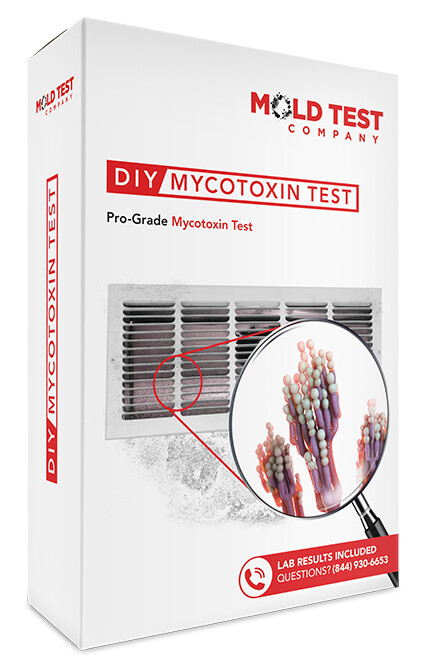The Need of Mycotoxin Examining in Agricultural Products to Make Sure Consumer Safety
The necessity of mycotoxin screening in agricultural products is a vital aspect of public wellness and safety that necessitates complete exam. Mycotoxins, harmful compounds created by particular fungi, can infiltrate numerous plants, leading to significant health risks for customers, such as carcinogenic results and organ damage.
Understanding Mycotoxins
Mycotoxins, toxic second metabolites produced by certain fungi, present a substantial threat to agricultural items and human wellness. These substances are generated by numerous varieties of mold and mildews, such as Aspergillus, Fusarium, and Penicillium, which can infect plants both pre- and post-harvest - Mycotoxin testing Services. One of the most common mycotoxins include aflatoxins, ochratoxin A, fumonisins, zearalenone, and deoxynivalenol (DON)
Mycotoxin contamination can happen under certain environmental problems, such as high humidity and temperature, which favor the growth of mold. Agricultural products like grains, nuts, spices, dried fruits, and coffee are particularly at risk. The presence of mycotoxins in these commodities can cause considerable financial losses because of minimized plant yields and the need for strenuous testing and purification processes.
Comprehending the biochemical nature and development of mycotoxins is essential for establishing effective reduction methods. Study has actually revealed that mycotoxins exhibit a variety of chemical structures and residential properties, making detection and elimination challenging. Advanced analytical techniques, including chromatography and mass spectrometry, are utilized to determine and quantify mycotoxins in agricultural products, making certain that contamination levels stay within secure limitations developed by regulative bodies.
Health Threats of Mycotoxins
Provided the considerable threats associated with mycotoxins in agricultural products, recognizing their impact on health and wellness is critical. Mycotoxins, hazardous second metabolites generated by fungis, pose serious hazards to both human and animal health.
Severe mycotoxin poisoning, although much less common, can cause extreme and prompt illness such as liver damages, stomach disruptions, and hemorrhaging. Ochratoxin A, another powerful mycotoxin, is connected to kidney damages and has potential carcinogenic effects. At the same time, fumonisins, mainly impacting maize, are connected with esophageal cancer and neural tube issues.

Typical Resources of Contamination
Understanding the usual sources of contamination is important for successfully handling and minimizing the risks positioned by mycotoxins. Mycotoxins are harmful secondary metabolites created by specific sorts of fungis, which can infect agricultural items at different stages of handling, storage, and manufacturing. The key sources of contamination include field conditions, post-harvest handling, and storage space settings.
Field problems play a substantial duty, with aspects like weather, crop vulnerability, and dirt wellness influencing fungal growth. Crops such as corn, peanuts, Full Report wheat, and tree nuts are specifically prone to mycotoxin-producing fungi like Aspergillus, Fusarium, and Penicillium varieties. Insufficient plant turning and poor parasite management can exacerbate the risk of contamination.
Post-harvest handling is another critical point where contamination can occur. Mechanical damages during harvesting and transportation creates access factors for fungis, while incorrect drying methods can leave dampness degrees high enough to support fungal development.
Storage space environments add significantly to contamination threats. Poorly maintained storage facilities with high moisture and temperature level levels create suitable conditions for mycotoxin manufacturing. Routine evaluations and proper storage space conditions are crucial in suppressing this danger.
Mycotoxin Checking Methods
Efficient administration of mycotoxin contamination pivots not only on acknowledging possible resources but additionally on implementing robust testing methods to find these dangerous substances. Mycotoxin testing approaches can be extensively classified right into chromatographic and immunochemical strategies.
On the various other hand, enzyme-linked immunosorbent assay (ELISA) and lateral flow assays are noticeable immunochemical techniques. ELISA, particularly, is extensively utilized as a result of its cost-effectiveness, convenience of use, and fast turnaround time. Side flow assays supply fast, on-site testing capacities, making them suitable for area applications where immediate check this choices are needed.
In addition, advancements in molecular biology have actually presented PCR-based methods with the ability of spotting mycotoxin-producing fungi at genetic degrees, providing an anticipating strategy to contamination danger. Integrating these diverse methods enhances the dependability and comprehensiveness of mycotoxin discovery, making sure that agricultural items meet safety standards and securing consumers from possible wellness dangers.
Advantages of Routine Evaluating

Normal mycotoxin screening offers significant benefits that significantly bolster agricultural safety and security and top quality. Among the main advantages is the defense of consumer wellness. Mycotoxins, poisonous substances created by particular fungis, can infect food and present severe health and wellness dangers, including cancer and severe poisoning. Routine testing ensures that polluted items do not reach customers, thereby mitigating carcinogen.
In addition, consistent screening assists in preserving the integrity and online reputation of farming manufacturers. By carefully monitoring and controlling mycotoxin levels, producers can prevent costly recalls and legal effects. This not just makes sure conformity with stringent global safety standards yet likewise promotes consumer count on and loyalty.

Final Thought
The necessity of mycotoxin go to website testing in agricultural products is underscored by the substantial wellness threats posed by these poisonous substances. Ensuring consumer safety requires the recognition and elimination of infected products from the supply chain. Normal testing not only mitigates the risk of intense poisoning and chronic wellness concerns but additionally supports compliance with safety requirements. It improves the track record of manufacturers and promotes count on within the agricultural supply chain, inevitably safeguarding public wellness.
The need of mycotoxin screening in agricultural products is a crucial facet of public health and security that necessitates comprehensive evaluation. Mycotoxins, harmful compounds produced by certain fungis, can penetrate various plants, leading to significant wellness risks for consumers, such as carcinogenic results and body organ damages.Mycotoxins, hazardous second metabolites created by particular fungis, offer a significant risk to agricultural products and human wellness.Offered the considerable dangers associated with mycotoxins in farming products, understanding their effect on wellness is extremely important (Mycotoxin testing Services).The necessity of mycotoxin testing in farming items is emphasized by the substantial health dangers positioned by these poisonous compounds
Comments on “Mycotoxin testing Services: Making sure Quality and Safety in Your Supply Chain”